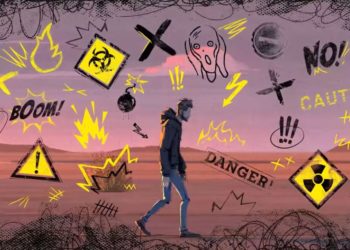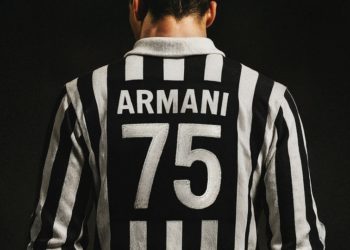Karen Read’s second murder trial has started off much differently from her first. On Tuesday, the former equity analyst was back in the defendant’s seat in the same Dedham, Massachusetts, courtroom where she stood trial last year, once again facing charges of second-degree murder, manslaughter, and leaving the scene of an injury or accident. The allegations stem from the mysterious 2022 death of her Boston police officer boyfriend, John O’Keefe, who was found on the lawn of another Boston police officer, Brian Albert, in a blizzard. Because of the nontraditional defendant (a woman with advanced degrees), alleged manner of death (being killed by a car is less common than being poisoned), and claims (that Read is being framed in an elaborate law-enforcement cover-up), the trial snowballed into a global internet obsession by the time it ended in a hung jury last July.
According to the defense, five jurors have since come forward to say that during the first trial jurors voted unanimously to acquit Read of second-degree murder and of leaving the scene, but they did not understand that they could come to a partial verdict. Read has appealed the decision up to the Supreme Court, which still has not decided whether it will take the case, and denied her emergency request to pause the Norfolk County case.
Read’s legal team is larger this time around: Robert Alessi of New York sat alongside Read’s lawyers from the previous trial, Alan Jackson, David Yannetti, and Elizabeth Little. Victoria George, an alternate juror from the first trial who, as Vanity Fair reported, joined Read’s team after growing frustrated with special prosecutor Hank Brennan’s statements during pretrial hearings last month, sat in the gallery with a legal pad in hand. And Evan Wolk—a third-year Boston College Law School student and one of nine law clerks working for Read—was perched behind two computer screens in place of the defense’s previous A/V specialist. All 11 of Read’s additions are working pro bono, after the defendant sunk seven figures of savings and donations into paying for her first defense.
Read changed her strategy too: The meticulous, LA-based Jackson delivered the opening remarks, as opposed to the Massachusetts-based Yannetti, who delivered the defense’s opening statement in the first trial. Within the first 90 seconds, Jackson brought up the fact that Michael Proctor, the lead investigator on Read’s case, had been fired by the Massachusetts State Police last month. (Proctor plans to appeal the decision, according to his lawyer.)
“Massachusetts State Police found…Michael Proctor guilty of bringing dishonor to the department,” Jackson told the pool of 18 jurors from the podium. “Not in some other case…in this case.” Among the reasons for his dismissal, said Jackson, “bias in favor of his friends” and “bias against my client.” He looked up at the jurors: “Do you have any idea how hard it is for a state trooper to be fired?”
After a beat, Jackson continued: “Well, the evidence is going to show that Michael Proctor earned it—every bit of it.”
Jackson brought up the damning text message that Proctor sent hours into the investigation—determining that Brian Albert, the Canton local on whose property O’Keefe was found, would not “catch any shit,” as Jackson put it, because “he’s a Boston cop too.” Said Jackson, “That quote defines the lack of integrity of the Commonwealth’s entire case, entire investigation, and this prosecution.” The entire investigation, he said, was “corrupted by bias, corrupted by incompetence, and corrupted by deceit.”
Moments beforehand, Brennan had delivered his own opening salvo. Like Read, the Commonwealth has also changed its legal lineup and strategy. Adam Lally, the Norfolk assistant district attorney who acted as lead prosecutor the first time around, had delivered his opening remarks in monotone. But Brennan—the former Whitey Bulger defense lawyer slated to earn up to $225,000 on the case, according to CBS News outlet WBZ—was confident and dynamic. He left the podium, and walked back and forth before jurors like the lawyer in a TV drama might, outlining the prosecution’s case.
The latest on Karen Read’s trialArrow
“We are here today because John O’Keefe was killed by the actions and conduct of that defendant, Karen Read,” Brennan said, pointing to Read in her seat. There’s a degree of theater to trial lawyering, and Brennan brought a certain dramatic flare to the proceeding as he described the Commonwealth’s version of events: that after a night of heavy drinking and fighting, Read dropped O’Keefe off at 34 Fairview Road, and then reversed into him at a high speed.
“She put the Lexus in reverse, put her foot on the gas pedal, and began to press. Not 25%, not 50%…up to 75%,” he said, motioning as if his hand were the foot on the pedal. “The Lexus tires spun backward, she went backwards at least 70 feet. She clipped John O’Keefe. He fell backwards, hit his head, broke his skull.”
Jackson, meanwhile, told jurors that they would hear from a medical professional new to the case: Elizabeth Laposata, a forensic pathologist who teaches at Brown University, who will assert that the injury to the back of O’Keefe’s head was “immediately incapacitating” and “produced by an impact from a raised or ledged surface, a surface that does not exist on Brian Albert’s front lawn.” Laposata will also testify, he said, that none of O’Keefe’s injuries arose from a collision or hypothermia—the latter of which is significant because the Commonwealth alleges that O’Keefe was left to die in the front yard during a blizzard for over five hours. Jackson told the courtroom that Laposata determined that “John O’Keefe was injured someplace warmer and he was moved. That alone is reasonable doubt.”
Absent from Brennan’s opening statement were several important details to the case. Though he repeatedly referenced 34 Fairview Road, the property where O’Keefe was found, he never mentioned that the owner was Albert, a Boston police officer. He never mentioned Proctor’s name, despite the fact that he had been the lead investigator on the case. And he never discussed the glaring holes in the investigation.
Jackson planted seeds about the coincidences following O’Keefe’s death that involved Albert and Brian Higgins, an agent at the Bureau of Alcohol, Tobacco, Firearms, and Explosives (ATF), both of whom Read claims were involved in O’Keefe’s death. (Albert and Higgins deny any involvement in O’Keefe’s death.) After Albert’s dog attacked a dog and bit a woman who tried to intervene about three months after O’Keefe’s death, Albert rehomed his dog of seven years and moved out of the house he and his family had owned for decades. (A lawyer for Albert previously told VF that the decision to sell the family house was not related to the case.)
“You’ll also learn [that] after this incident, within days of one another, both Brian Higgins and Brian Albert—both police officers, both trained investigators—got rid of their phones,” Jackson said. Describing the morning of January 29, 2022, Jackson said, “Blood-curdling screams, ambulances, emergency lights on, fire engines, ladder trucks, paramedics, patrol vehicles, patrol cruisers, police officers, first responders, firefighters, all swarming over Brian Albert’s lawn, literally feet under his bedroom window. Yet Brian Albert, a sworn peace officer, a first responder himself, never came outside. Never went outside to see what the chaos was about…to assist a man in need.” (The Alberts have said they slept through the noise.)
Read claims that she was framed in an elaborate cover-up involving four law-enforcement agencies.
After a short break, the first witness Brennan called to the stand was Timothy Nuttall, the firefighter and paramedic Brennan mentioned in his opening argument as having overheard Read say “I hit him” on the morning of January 29, 2022. Nuttall told Brennan about responding to the Albert home and testified that he heard Read say “I hit him” three times. At last year’s trial, Nuttall testified that he heard the statement from Read twice. According to Jackson, Proctor’s report, written within two weeks of O’Keefe’s death, mentioned Nuttall overhearing “I hit him” once.
Making the second trial more treacherous for certain witnesses is the fact that they’ve been interviewed so many times—before grand juries, a prior jury, and by investigators—that they risk impeaching themselves should their memory of events be different on the stand this time around.
Under cross-examination by Jackson, Nuttall revealed that he met with the prosecution three times in the last three weeks to discuss prior testimony—specifically the number of times Nuttall says he heard Read say, “I hit him.” Nuttall told Jackson that he spoke to Brennan as recently as Monday night, the night before he testified as a prosecution witness.
“What did you talk about last night?” asked Jackson.
“Mostly just…” he said, before a pause, “making sure that everything was as it had been. And by that I mean it was three times, and that we were continuously making sure that everything was the way that it had happened that morning.”
On Wednesday, the prosecution called Kerry Roberts to the witness stand. She was with Read when the defendant discovered O’Keefe’s body on the lawn. Though she has since testified about noticing Read’s taillight was broken on the morning of January 29, 2022—a crucial detail of the case—she did not mention it in her initial interview with law enforcement. “I didn’t want to accuse anyone of anything,” Roberts told Jackson under cross-examination.
Another important detail of the case has been a Google search made on Jennifer McCabe’s phone—“hos [sic] long to die in cold”—the morning O’Keefe’s body was found. McCabe has maintained that she only made the search at Read’s request after O’Keefe was found in the snow. Roberts previously testified before a grand jury, under the penalty of perjury, that she heard Read ask McCabe that question. But on the stand Wednesday, she admitted she did not in fact hear the question asked.
“That was a false statement, wasn’t it?” Jackson asked Roberts, as she grew agitated under his needling.
“Yes, technically,” said Roberts.
After a heated back-and-forth, she said, “I misunderstood the question.”
On Wednesday, O’Keefe’s mother, Margaret, also testified. She was asked by Brennan to describe her immediate family. She recalled her daughter, Kristen, dying from cancer in 2013 and pointed out her son Paul. Speaking about her deceased son, she addressed the courtroom: “Then you all know about John.”
She tearfully reminisced about her late son and the morning she learned he was dead. The call came to her from Roberts: “She said John was found in a snowbank…they don’t know what happened.”
Margaret testified that when she spoke to Read, she learned that the defendant had dropped O’Keefe off at Albert’s home the night before.
“I said, ‘You just left him there?’” recalled Margaret. “She said, ‘Yes, I just left him there.’”
More Great Stories From Vanity Fair
-
How Sebastian Stan Became Hollywood’s Most Daring Shape-Shifter
-
Inside Elon Musk’s Grievance-Fueled MAGA-morphosis
-
Sinners’ End Credits Explained
-
The Original Girl of the Year
-
Elon Musk’s Breeding Spree Is So Much Wilder Than You Thought
-
Who Is Pete Hegseth’s Wife, Jennifer Rauchet?
-
Roman Reigns’s Quest to Be WWE’s Next Great Crossover Star
-
Every Quentin Tarantino Movie, Ranked
-
Tom Hanks Is Supportive of His Daughter’s Revealing Memoir About Her Troubled Childhood
-
Meet Elon Musk’s 14 Children and Their Mothers (Whom We Know of)
-
From the Archive: Pope Versus Pope: Benedict XVI, Francis, and Their Holy War
The post Karen Read’s Second Murder Trial: Let the Witness Questioning Begin appeared first on Vanity Fair.




